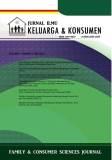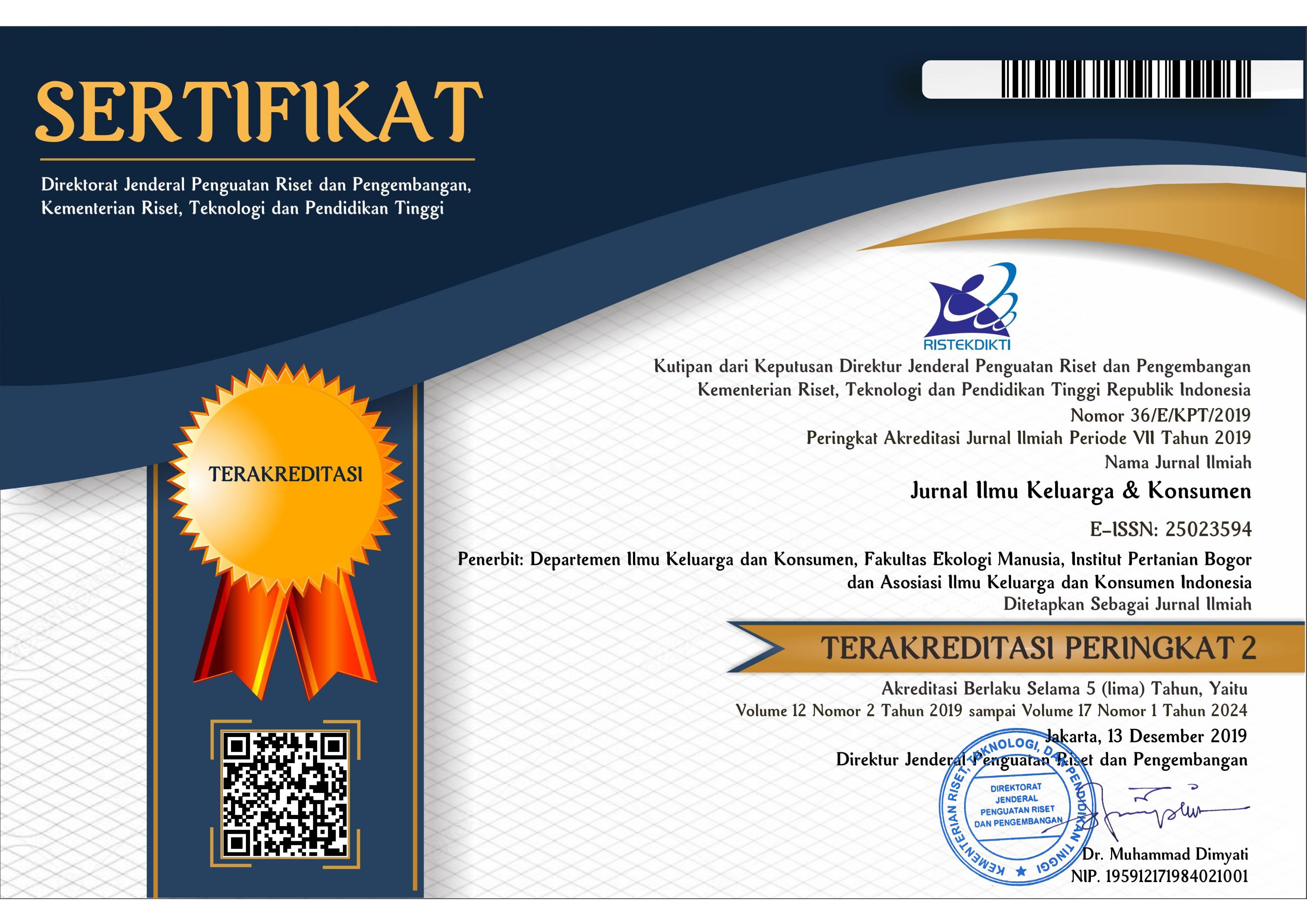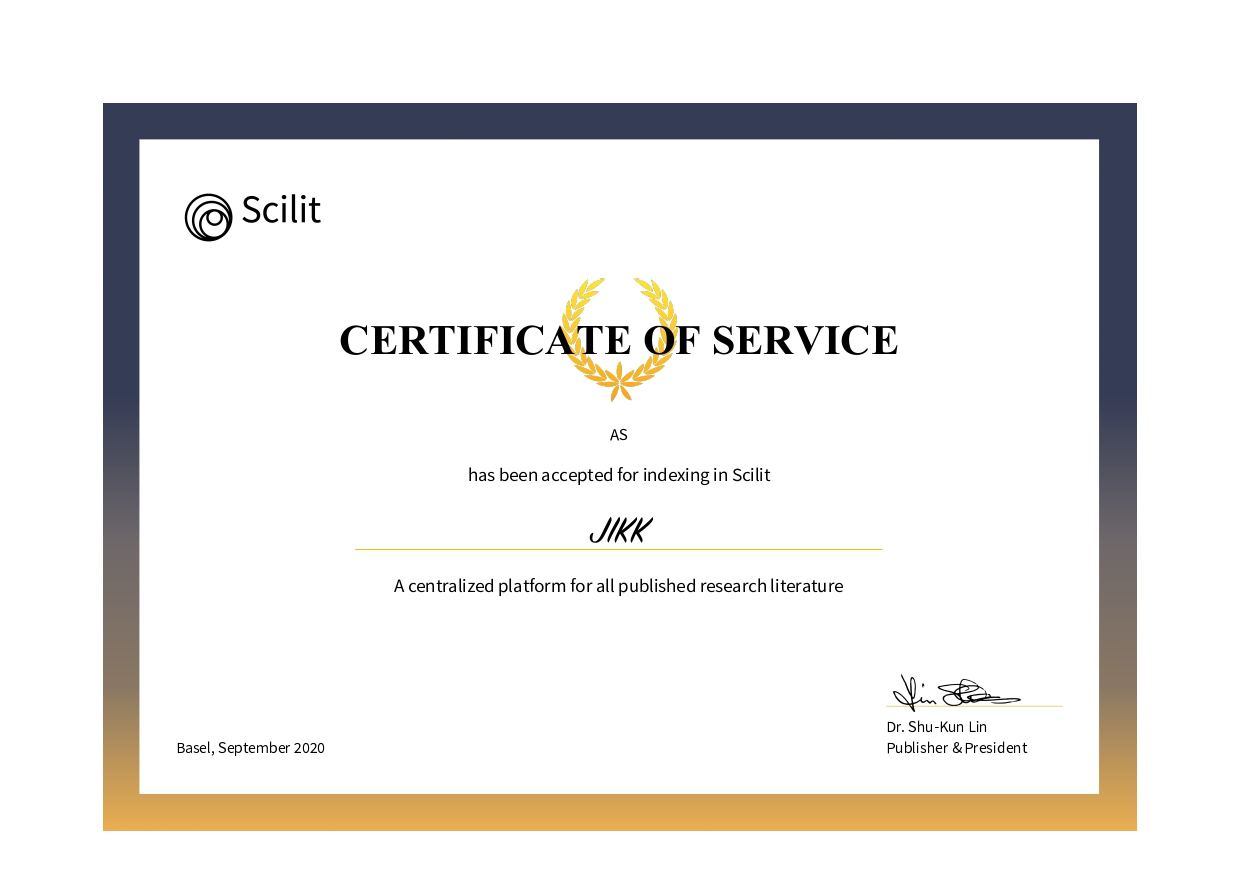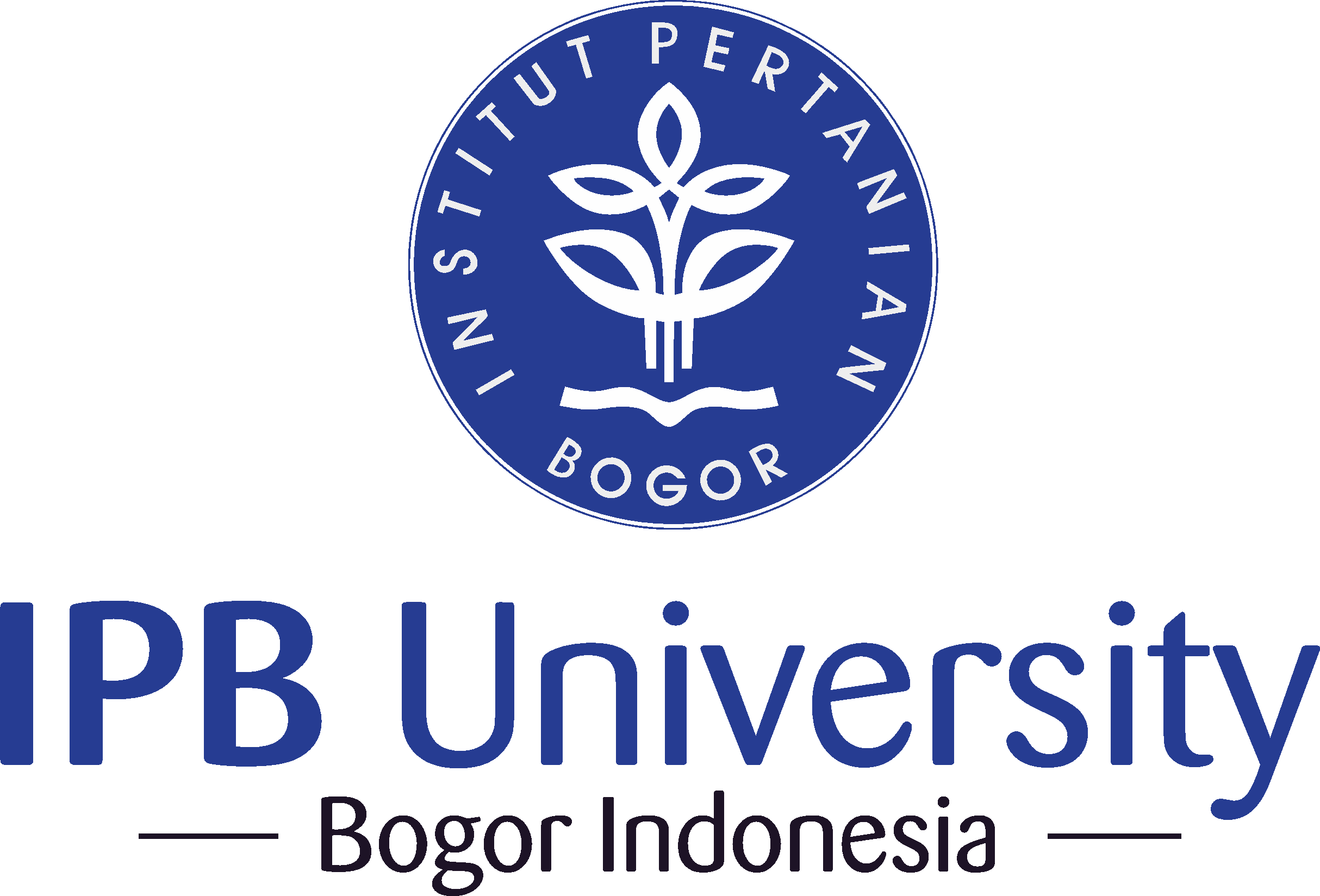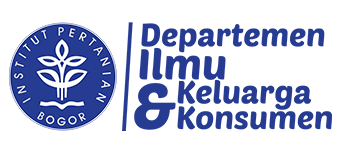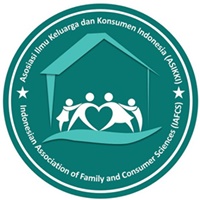Relasi Gender, Tekanan Ekonomi, Manajemen Keuangan, Strategi Nafkah, dan Kualitas Hidup pada Keluarga Nelayan
Abstract
The high cost of living in various aspects becomes a challenge that must be faced by the family today, so that family must have a strategy in the management of resources to prevent the occurrence conflict and trigger economic pressure on the family, especially among fishermen families. This study aimed to determine the effect of gender relations, economic pressures, financial management and livelihood strategies on the quality of life of fishermen families. This research used quantitative study design. The research location was Mayangan Village, Legon Kulon Subdistrict, Subang Regency, West Java. The place of this study was selected based on the livelihood of the dominant fisherman population, is Mayangan Village. Respondents in this research were fisherman's wife and willing to be the respondent. The respondents were 60 fishermen's wives. Respondents were selected by using simple random sampling technique. Primary data were collected directly using interview techniques using structured questionnaires. The results showed that economic pressure and financial management influence significantly toward quality of life, financial management and gender relations influence significantly toward livelihood strategy. The implication of this research is the government should provide assistance to the wife in the form of tips in overcoming the economic pressure, so it is necessary to develop family empowerment program with issues in gender relation, financial management and livelihood strategy to solve family problems.
References
[BPS] Badan Pusat Statistik. 2013. Jumlah Penduduk Miskin. Jakarta (ID): Badan Pusat Statistik.
Chin. (2000). Partial Least Squares For Researcher: An Overview and Presentation of Recent UsingThe PLS Approach: University of Houston. Texas.
Dharmawan, A.H. (2007). Sistem penghidupan dan nafkah pedesaan: pandangan sosiologi nafkah (livelihood sociology) mahzab Barat dan mahzab Bogor. Sodality: Jurnal Transdisiplin Sosiologi, Komunikasi, dan Ekologi Manusia. 01(2):169-192. ISSN: 1978-4333.
Durband, D., Britt, S., & Grable, J. (2010). Personal and Family Finance in the Marriage and Family Therapy Domain. The Journal of Financial Therapy, 1 (1), 7-21,DOI: 10.4148/jft.v1i1.242.
Fofana. (2009). A socio-economic sustainability assessment of livelihoods from scrap metal collection in Freetown, Sierra Leone (Tesis). Lund University International, Lund, Swedia.
Firdaus., & Sunarti, E. (2009). Hubungan antara tekanan ekonomi, manajemen keuangan, dan mekanisme koping dengan kesejahteraan keluarga wanita pemetik teh. Jurnal Ilmu Keluarga dan Konsumen, 2(1), 21-31. DOI: http://dx.doi.org/10.24156/jikk.2009.2.1.21.
Fitzsimmons, V.S., Hira, T.K., Bauer, J.W., & Hafstrom, J.L. (1993). Financial management: development of scales. Journal of Family and Economic Issues. 14(3), 257-274. ISSN: 1058-0476.
Grable, J.E., Park, J.Y., & Joo, S.H. (2009). Explaining financial management behavior for Koreans living in the United States. Journal of Consumer Affairs. 43(1):80-105. DOI: http://doi.org/10.1111/j.1745-6606.2008.01128.x.
Hakim, F.A. (2014). Manajemen keuangan dan keputusan keuangan istri pada keluarga dengan suami istri bekerja. Jurnal Ilmu Keluarga dan Konsumen 7(3),1-9. DOI: http://dx.doi.org/10.24156/jikk.2014.7.3.174
Herawati, T., Ginting., Asngari., Susanto., & Puspitawati, H. (2011). Ketahanan pangan keluarga peserta program pemberdayaan masyarakat di pedesaan. Jurnal Gizi dan Pangan, 2011, 6(3), 208-216. DOI: http://dx.doi.org/10.25182/jgp.2011.6.3.208-216.
Hilton., & Devall. (1997). The Family economic strain scale: development and evaluation of the instrument with single and two parents. Journal of Family and Economic Issues. 18(3), 248-271. ISSN: 1058-0476.
Husin, S. (2009). Analisis faktor-faktor yang mempengaruhi produktivitas usaha tani dan pengaruhnya terhadap kepuasan petani (Tesis). Universitas Indonesia, Jakarta, Indonesia.
Irzalinda, V, Puspitawati, H, Muflikhati, I. (2014). Aktivitas bersama orang tua-anak dan perlindungan anak meningkatkan kesejahteraan subjektif anak. Jurnal Ilmu Keluarga dan Konsumen, 7(1)40-47. DOI: http://dx.doi.org/10.24156/jgp.2014.7.1.40.
Iskandar, A. (2008). Analisis praktik manajemen sumberdaya keluarga dan dampaknya terhadap kesejahteraan keluarga di Kabupaten dan Kota Bogor. Jurnal Transdisiplin Sosiologis, Komunikasi, dan Ekologi Manusia. 2(1),81-98. ISSN: 1978-4333.
Khizindar, T.M. (2009). Quality of life in developing countries: An empirical investigation. Journal of American Academy of Business. 14(2),162-170. ISSN: 1540-7780.
Kumari, K.K. (2011). Marital adjustment and family resource management of working women among different income groups. International Referred Research Journal. 3(27),37-39. ISSN: 2278-4497.
Krzaklewska, E. (2014). Measurement of gender equality analyzing dimensions, embracing areas, considering contexts.. Working paper 1(2) “Gender Equality and Quality of Life-State of Art Report”.
Kalinda, T., & Lanyingtuo, A. (2014). Livelihood strategies, shocks and coping mechanisms among rural households in southern zambia. Journal of Social Sciences. 6(4): 120-133. ISSN: 2076-0760.
Kusumo., Sunarti, E., & Pranadji. (2008). Analisis peran gender serta hubungannya dengan kesejahteraan keluarga petani padi dan hortikultura di daerah pinggiran perkotaan. Media Gizi dan Keluarga 32(2): 52-64. ISSN: 0216-9363.
Latan, H. (2013). Model Persamaan Struktural Teori dan Implementasi AMOS 21.0. Bandung: Alfabeta.
Lawton, P.W. (2001). Quality of life and the end of life. Di dalam : Birren JE dan Schaie KW, editor. London (GB). Academic Pr.
Mudey, A., Ambekar, S., Goyal, R., Agarekar, S., & Wagh, V. (2011). Assessment of quality of life among rural and urban elderly population of Wardha District, Maharashtra, India. Ethno Med, 5(2), 89-93. DOI: https://doi.org/10.1080/09735070.2011.11886394.
Muflikhati, I., Hartoyo., Sumarwan, U., Fahrudin, A., & Puspitawati, H. (2010). Kondisi sosial ekonomi dan tingkat kesejahteraan keluarga: kasus di wilayah pesisir Jawa Barat. Jurnal Ilmu Keluarga dan Konsumen, 3(1)1-10, DOI: http://dx.doi.org/10.24156/jikk.2010.3.1.1
Nugraheni, W. (2012). Peran dan potensi wanita dalam pemenuhan kebutuhan ekonomi keluarga nelayan. Journal of Educational Social Studies. 1(2): 104-111. P-ISSN: 2252-6390, E-ISSN: 2502-4442.
Netuveli, G., & Blane, D. (2008). Quality of life in older ages. British Medical Journal. 85,113-126. ISSN: 0007-1420.
Okech. (2012). Effect of economic pressure on resilience and strengths of indivisuals living in extreme poverty. Journal of Poverty, 16,429-446. ISSN : 1087-5549.
Park, C.M., & Shin, D.C. (2005). Perceptions of life quality among the Korean mass public. Unraveling their dynamics and standards. E-jounal of Social Indicators Research. Vol 7(3), 1-30. ISSN: 0303-8300.
Puspitawati, H. (2009). Pengaruh nilai ekonomi pekerjaan ibu rumah tangga terhadap kesejahteraan keluarga subjektif. Jurnal Ilmu Keluarga dan Konsumen, 2(1),11-20. DOI: http://dx.doi.org/10.24156/jikk.2009.2.1.11.
___________. (2012). Gender dan Keluarga: Konsep dan Realita di Indonesia. Bogor: IPB Press.
Raharjo, I.T., Puspitawati, H., Krisnatuti, D. (2015). Tekanan ekonomi, manajemen keuangan, dan kesejahteraan pada keluarga muda. Jurnal Ilmu Keluarga dan Konsumen, 8(1),38-48. DOI: http://dx.doi.org/10.24156/jikk.2015.8.1.38.
Robila., & Krishnakumar. (2005). Effects of economic pressure on marital conflict in Romania. Journal of Family Psychology,19(2), 246–251. ISSN: 0893-3200.
Rodhiyah. (2012). Manajemen keuangan keluarga guna menuju keluarga sejahtera. Topik Utama: 28-33. ISSN: 0126-0731
Raviv., Gefen., & Fink. (2009). The personal service gap: Factors affecting adolescents willingness to seek help. Journal of Adolescents,32(3), 483-499. ISSN: 0140-1971.
Simanjuntak, M., Puspitawati, H., Djamaludin, M. (2010). Karakteristik demografi, sosial, dan ekonomi keluarga penerima Program Keluarga Harapan (PKH). Jurnal Ilmu Keluarga dan Konsumen 3(2), 101-113. DOI: http://dx.doi.org/10.24156/jikk.2010.3.2.101
Sabarella., Komalasari, W., Respati, E., Noviati., Wahyuningsih, S., Ningrum, M.H., Sehusman. (2014). Analisis Kesejahteraan Petani. Jakarta: Pusat Data dan Sistem Informasi Pertanian Kementan.
Satria, A. (2009). Pesisir dan Laut untuk Rakyat. Bogor : IPB Press.
_______, Muflikhati, I., Fatchiya, A., Kinseng, R., Oktariza, W., Herawati, T., Purnomo, S., Mulyanto, S., Arifianto, R. (2015). Analisis Kesejahteraan Rumah Tangga Usaha Perikanan. Jakarta : BPS.
Scoones, I. (1998). Sustainable rural livelihoods: a framework for analysis. IDS Working Paper 72, 1-23.
Sunarti, E., Tati., Atat, S.N., Noorhaisma., & Lembayung, D.P. (2005). Pengaruh tekanan ekonomi keluarga, dukungan sosial, kualitas perkawinan, pengasuhan dan kecerdasan emosi anak terhadap prestasi belajar anak. Media Gizi dan Keluarga, 29 (1), 34-40. ISSN 02116-9363.
______, Kholifah, I., Vidiastuti, F., Kharisma, N., Rochimah, N., & Herawati, T. (2013). Family vulnerability, family resource management, and family strength of aging family members. Paper presented at 5th International Work and Family Conference, University of Sydney, July 17-19.
Soesilo. (2007). Penyebab kemiskinan masyarakat tani (Studi Di Dusun Ngebrong, Desa Tawangsari, Kecamatan Pujon, Kabupaten Malang). Journal of Indonesian Applied Economics,1 (1), 57-67. P-ISSN: 1907-7947, e-ISSN: 2541-5395.
Skogrand, L., Johnson, A., Horrocks, A., & DeFrain, J. (2011). Financial management practices of couples with great marriages. Journal of Family Economic, 32(1), 27-35. ISSN: 1573-3475
Sugiharto., Hartoyo., & Muflikhati, I. (2016). Strategi nafkah, dan kesejahteraan keluarga pada keluarga petani tadah hujan. Jurnal Ilmu Keluarga dan Konsumen, 9(1),32-42. DOI: http://dx.doi.org/10.24156/jikk.2016.9.1.33
Tulak, P.P., Dharmawan, A.H., & Juanda, B. (2009). Stuktur nafkah rumah tangga petani transmigran: studi sosio-ekonomi di tiga kampung di Distrik Masni, Kabupaten Manokwari. Jurnal Transdisiplin Sosiologi, Komunikasi, dan Ekologi Manusia. 3(2), 203-220. ISSN: 1978-4333.
Widiyanto., Suwarto., & Retno, S. (2010). Dinamika Nafkah Rumah Tangga Petani Pedesaan dengan Pendekatan Sustainable Livelihod Approach (SLA): Kasus Petani Tembakau di Lereng Gunung Merapi-Merbabu, Propinsi Jawa Tengah. Jurnal Agritext, 28, 80-88. ISSN: 0854-8382.
Widodo, S. (2011). Strategi nafkah berkelanjutan bagi rumah tangga miskin di daerah pesisir. Jurnal Makara, Sosial Humaniora, 15(1), 10-20. ISSN: 1693-6701.
Yadollahi, M., Hj Paim, L., Othman, M., Suandi, T. (2009). Factors affecting family status. European Journal of Scientific Research. 37 (1),.99-109. ISSN: 2319-7064.
Yohnson. (2004). Peran universitas di Surabaya dalam meningkatkan jumlah keluarga mapan di Surabaya (seri penelitian keuangan keluarga). Jurnal Manajemen dan Kewirausahaan 6(1): 54-71. ISSN: 1411-1438, e-ISSN: 2338-8234.
Zuliany. 2013. Peran Istri dalam Pengelolaan Sumber Daya Keluarga dan Kesejahteraan Subyektif Keluarga pada Sistem Matrilineal. (Skripsi). Institut Pertanian Bogor, Bogor, Indonesia
Copyright (c) 2018 Jurnal Ilmu Keluarga & Konsumen

This work is licensed under a Creative Commons Attribution-ShareAlike 4.0 International License.
Authors submitting manuscripts should understand and agree that copyright of manuscripts published are held Jurnal Ilmu Keluarga dan Konsumen. The statement to release the copyright to Jurnal Ilmu Keluarga dan Konsumen is stated in Copyright Release Form. Copyright encompass exclusive rights to reproduce, to distribute, and to sell any part of the journal articles in all form and media. The reproduction of any part of this journal is allowed with a written permission from Jurnal Ilmu Keluarga dan Konsumen.

